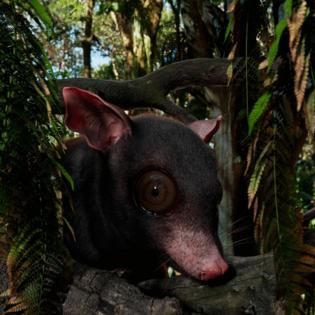University of Kansas researchers discover 'big possum' species from 60 million years ago in Texas
Published in Science & Technology News
Paleontologists at the University of Kansas have discovered a new “big possum” species that lived in the warm, tropical and vegetation-filled ecosystem of far west Texas 60 million years ago.
The scientists discovered a new species of ancient near-marsupials, or Swaindelphys, while analyzing fossils from Texas’ Big Bend National Park, according to a news release from KU. The 800,000 acre park is roughly 500 miles southwest of Fort Worth.
The fossils were originally found decades ago, but they had not been thoroughly studied. The project’s lead author, doctoral student Kristen Miller, was particularly interested in unknown molar fossils. She wanted to find out what species they represented.
The researchers, who published their findings last week in the Journal of Vertebrate Paleontology, were surprised at what they found.
This new species, called Swaindelphys solastella, is remarkable for multiple reasons. First, it is much larger than any other similar species known from the Paleocene period, according to the release. This is the period that occurred just after the extinction of dinosaurs.
The Swaindelphys solastella “was gigantic by the standards of Swaindelphys,” but researchers estimate it was the size of a modern hedgehog.
“Since everything is bigger in Texas, this is perhaps not surprising,” said curator and professor Chris Beard, co-author of the study.
Miller said the Swaindelphys solastella is also the youngest and most southern species from this time period.
While the fossils were found in Texas, the ecosystem they came from was drastically different than the one we see today.
Miller said the environment would have been warmer and more tropical than it is now, with lots of vegetation and rivers. The fossils were found in a deposit from an ancient river system, even though that river is long gone today.
Researchers said Swaindelphys are very similar to early primates. So, they hope to use this new discovery to inform studies about early primates in the same ecosystems in Texas.
Miller also said she wants to continue this research to see if ancient landscapes posed obstacles to species distribution, like the distribution of the Swaindelphys.
____
©2025 The Kansas City Star. Visit kansascity.com. Distributed by Tribune Content Agency, LLC.







Comments